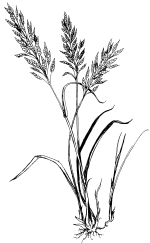
Koester Oral History: Craig's Adulthood
As a landowner, Craig begins pondering the land use of the prairie. He decides to begin conserving the land, partners with the Department of Natural Resources (DNR), and launches restoration efforts to preserve the prairie.
Listen to the audio recording to hear Craig Koester's experiences with life and the land.
Adulthood
Land Use and Future of Prairie Creek (0:00-2:31)
Historically, Prairie Creek was used for agriculture and grazing cattle, but as his dad grew older, Craig developed a sense of community and connectedness with the land that made him wonder about the future of the prairie.

"How can there be some kind of alternative future for the land?"
"What do you do with it [the land] if you don't want to just turn it into a marketable commodity?"
Partnering with the DNR (3:40-5:12)

Craig began communicating with the DNR in 2008. After an evaluation of the prairie's conservation potential, Craig was astonished at how DNR ecologists "could read plant life like I would read print."
The ecologists identified an abundance of native species present at Prairie Creek, such as Prairie Smoke, Blue Vervain, Indian grass, Big Bluestem, and Porcupine grass, to name a few.
Prairie Crabapple Preservation (10:02-15:03)
Craig applied for and received a grant to remove invasive species, such as Buckthorn, from the Oak Savanna portion of his property. With help from the DNR, Craig was able to save a population of wild prairie Crabapple trees that were approaching extinction within the region.
"We [Craig and a DNR staff member] got to one part of the Savanna and there were these small trees with silvery bark on them. What are they? They look kind of like plum, but they're not really plum."
“That near death experience and rejuvenation remains one of my most delightful moments, realizing what we were able to save through some luck and good planning.”

Moments of Discovery (15:31-20:25)

Searching for the Henslow's sparrow "became a highly rewarding challenge... because you've got to use your ears. Eyes are great but they're not enough." So it became a matter of "How attuned can one be to the fine nuances of a bird call?"
"It's that wonderful sense of connectedness when you've got to use your ears so intensely, you become more intensely aware than anything."


